Your first crew is already on-site, the second team is stuck behind a road closure, and a hot ticket just came in from your biggest client. You’re juggling texts, spreadsheets, and half-updated calendars while GPS pings roll in. That’s the moment when good field service management software turns chaos into a calm checklist. This guide zeroes in on the best free field service management software in 2025. You’ll learn what FSM software actually does, which features matter, and where “free” really delivers value versus where you’ll want to upgrade. We also show how Shifts by Everhour—our top pick when you need scheduling and time data in one place—fits naturally into a field workflow.
🔧 What Is Field Service Management (FSM) Software?
Field service management (FSM) software helps teams plan, dispatch, and complete offsite work—like installations, repairs, inspections, maintenance, and urgent callouts. The right platform turns coordination chaos into predictable, trackable workflows. At its best, FSM software covers:
- 🧾 Work orders & job details – Keep every task documented and accessible anywhere.
- 📅 Scheduling & dispatch – Assign jobs fast and adjust routes in real time.
- 💬 Communication – Send updates, reminders, and directions instantly.
- ⏱️ Time tracking & proof of service – Verify completions with photos or signatures.
- ⚙️ Inventory & basic invoicing – Track parts, tools, and simple billing from one place.
- 📊 Reporting & customer history – View job trends and service records for smarter planning.
☝️ Why it matters in 2025: crews are more distributed, SLAs are stricter, and customers want live updates—not static ETAs. Fortunately, free FSM tools are now powerful enough for small teams to standardize their processes before scaling.
⚙️ Key Features That Actually Help in the Field
Field teams don’t have time for clunky tools. The best scheduling software gives clarity, speed, and real visibility where it matters most.
📱 Fast, mobile-first scheduling
Drag-and-drop rosters, open shifts, and instant reassignments when someone calls in sick. Smart notifications keep everyone aligned with zero confusion.
🧭 Dispatch and job details in one tap
Each tech should see their full route, customer contacts, parts, and checklists—no app hopping, no guesswork.
🧾 Work order templates and digital forms
Digital checklists, signatures, and photos ensure clean records and fewer callbacks. Consistency replaces chaos.
⏱️ Time tracking that matches reality
Integrate scheduling and time tracking so you can finally compare “scheduled vs actual” hours. Spot travel delays, overtime, and hidden inefficiencies fast.
📍 GPS or location context
No surveillance—just validation. Confirm clock-ins and completions happened at the right job site for peace of mind.
📊 Reporting for real decisions
Skip vanity dashboards. See hours, first-time fix rates, repeat visits, and job cycle times so you can take action—not just look at charts.
🧠 10 Best Free Field Service Management Software (2025)
| Tool | Key Features | Pricing/Plan | Ideal For |
| Shifts by Everhour | Drag-and-drop scheduling; open shifts and swaps; mobile app; built-in time tracking; scheduled-vs-actual reports | Free & paid plans | Teams that want accurate schedules and time data in one place |
| Connecteam | Mobile scheduling; job checklists; GPS time clock; chat and announcements; time-off tools | Free & paid plans | Small field teams and contractors that want all-in-one ops with a free tier |
| Odoo Field Service (Community) | Work orders; timesheets; route planning; quotes and invoicing; integrations with Odoo apps | Free & paid options | DIY-friendly teams that prefer open-source and modular growth |
| Jotform | Work order forms; file uploads and photos; e-signatures; logic and approvals; 150+ integrations | Free & paid plans | Teams building lightweight FSM flows with custom forms and checklists |
| Field Nation | On-demand tech marketplace; dispatch and payments; provider profiles; ratings; work tracking | Free signup & paid tiers | Ops leaders who need to staff jobs fast and manage variable demand |
| Fiix (Free plan) | Work orders; preventive maintenance; asset records; notifications; basic reporting | Free & paid plans | Shops blending field service with maintenance/CMMS needs on a budget |
| UpKeep (Free tier) | Work orders; asset and inventory; mobile requests; basic dashboards; vendor tracking | Free & paid plans | Maintenance-heavy field teams needing a free starter CMMS-style tool |
| ClickUp (Free) | Tasks and checklists; forms; mobile app; custom fields; basic time tracking | Free & paid plans | SMBs that want to assemble an FSM-lite stack with flexible project tools |
| Airtable (Free) | Work order base; views and filters; forms; automations; attachments | Free & paid plans | Teams that want a spreadsheet-like database for jobs, parts, and customers |
| Trello (Free) | Kanban boards; card templates; due dates and checklists; mobile app; power-ups | Free & paid plans | Very small crews that need a simple, visual job board to get organized |
Quick tool notes and best-fit use cases
Shifts by Everhour
For teams that schedule people first and manage jobs second, Shifts by Everhour nails the essentials: rapid scheduling, built-in time tracking, and scheduled-vs-actual reporting. Ideal if you want to track labor accuracy without duct-taping separate apps.
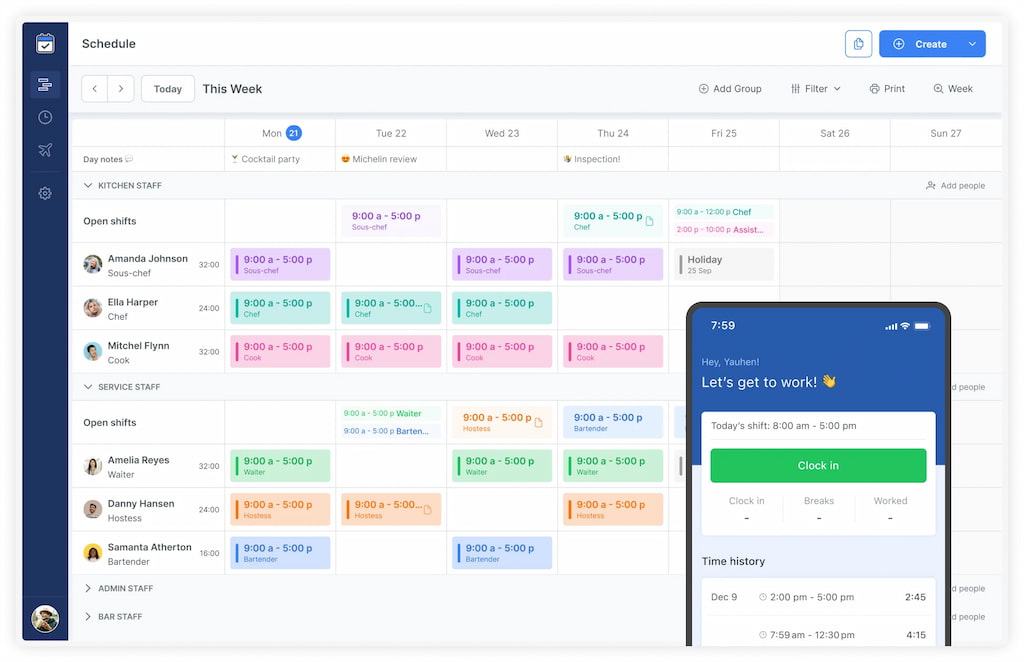
Connecteam
A popular pick among small service businesses because the free plan covers up to 10 users and bundles messaging, scheduling, and a GPS time clock. It’s a solid “all-in-one” mobile hub when you’re standardizing operations.
![the 9 best when i work alternatives in 2023 [both paid and free]](https://blog-cdn.everhour.com/blog/wp-content/uploads/2023/01/connecteam.jpg)
Odoo Field Service (Community)
Open-source flexibility with a real field module: route planning, timesheets, and quoting/invoicing integrations. Best for teams comfortable with light IT setup or a partner who can host and tailor the stack.
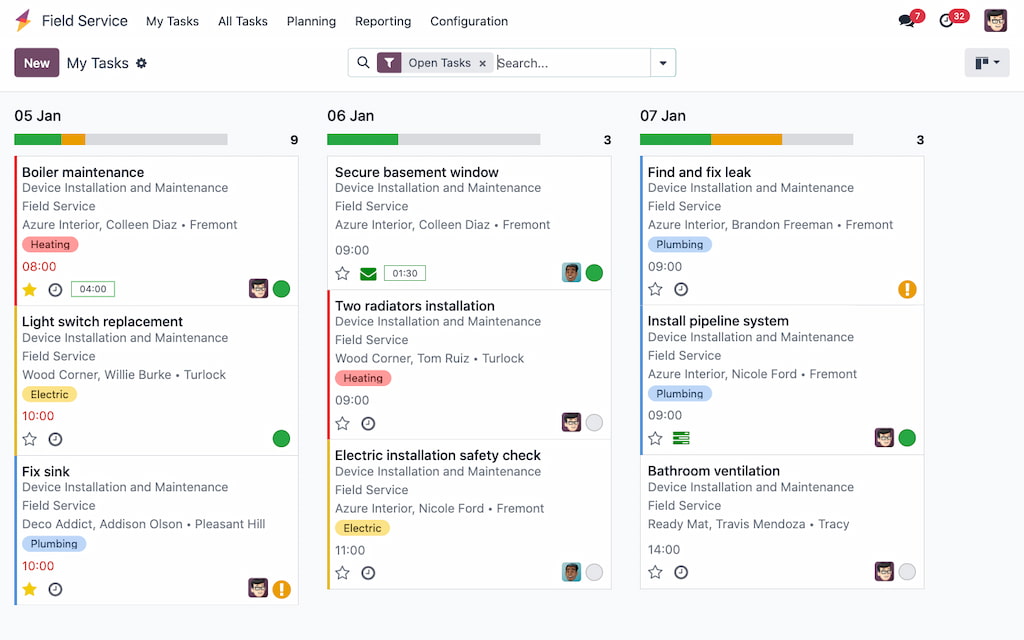
Jotform
Not a traditional FSM, but a workhorse for custom work orders, field checklists, signatures, and photo capture—plus integrations to pipe data into your PM or CRM. The free tier is generous for small volumes.
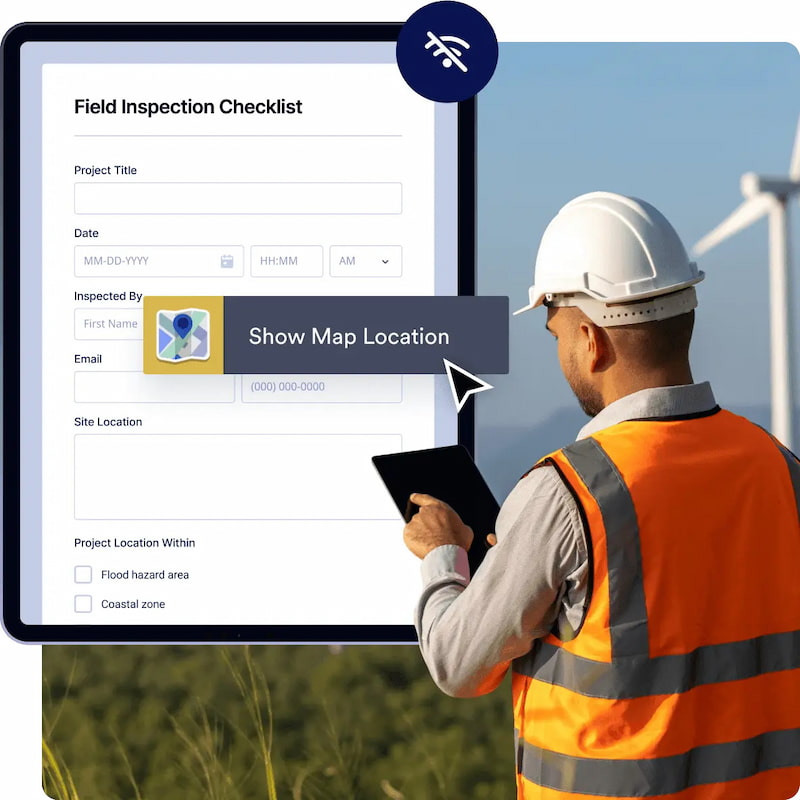
Field Nation
More marketplace than software, but invaluable when staffing is the bottleneck. Create a free profile to find techs and manage engagements; companies can also subscribe for advanced features and management.
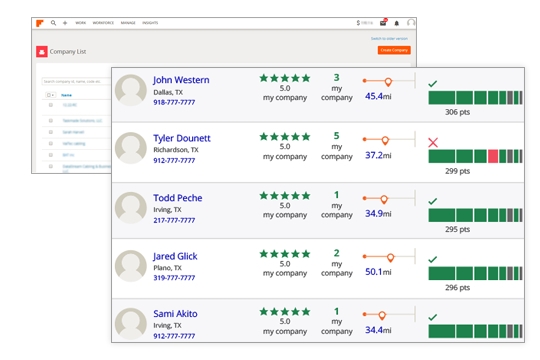
Fiix (Free plan)
A recognizable CMMS with a free edition that covers basic work orders and preventive maintenance—great if your “field” is heavy on recurring maintenance versus one-off jobs.
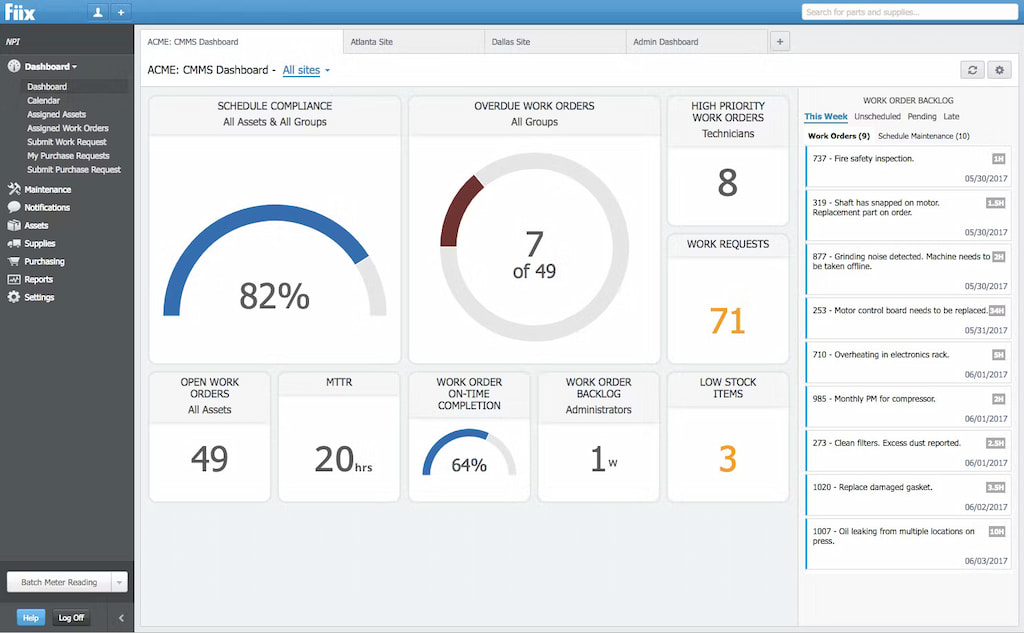
UpKeep (Free tier)
Another CMMS-style option with a free offering; useful for teams that want to digitize work orders, inventory, and assets and then grow into paid features later.
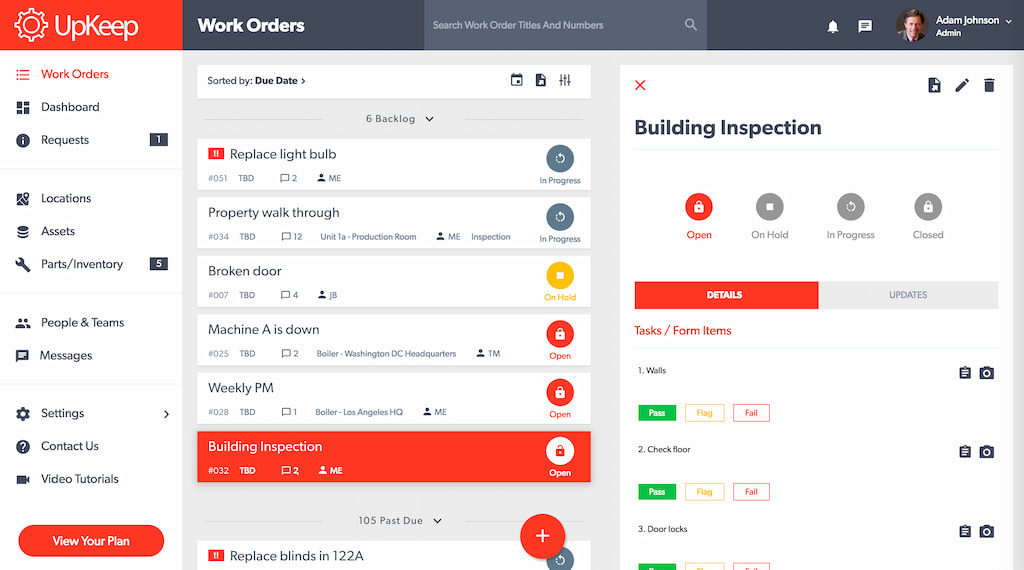
ClickUp (Free)
A flexible building block: tasks become work orders, forms capture requests, and the mobile app keeps everyone synced. Add custom fields and views to mimic job pipelines and routing.
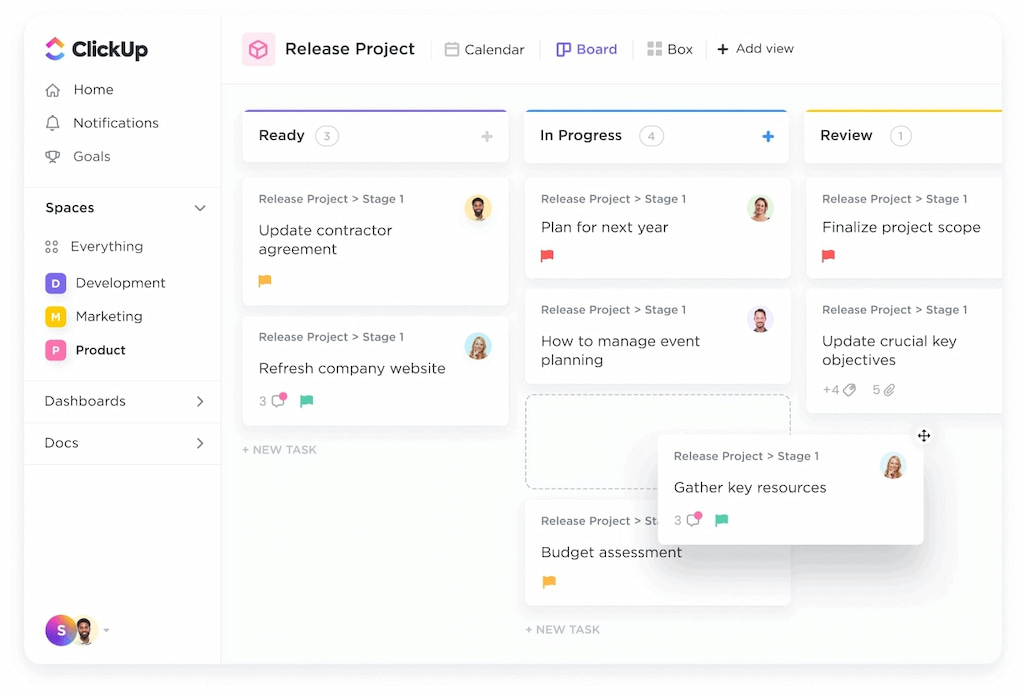
Airtable (Free)
Build a simple FSM database with clients, jobs, parts, and attachments. Forms feed new requests straight into your base; automations send reminders without code.
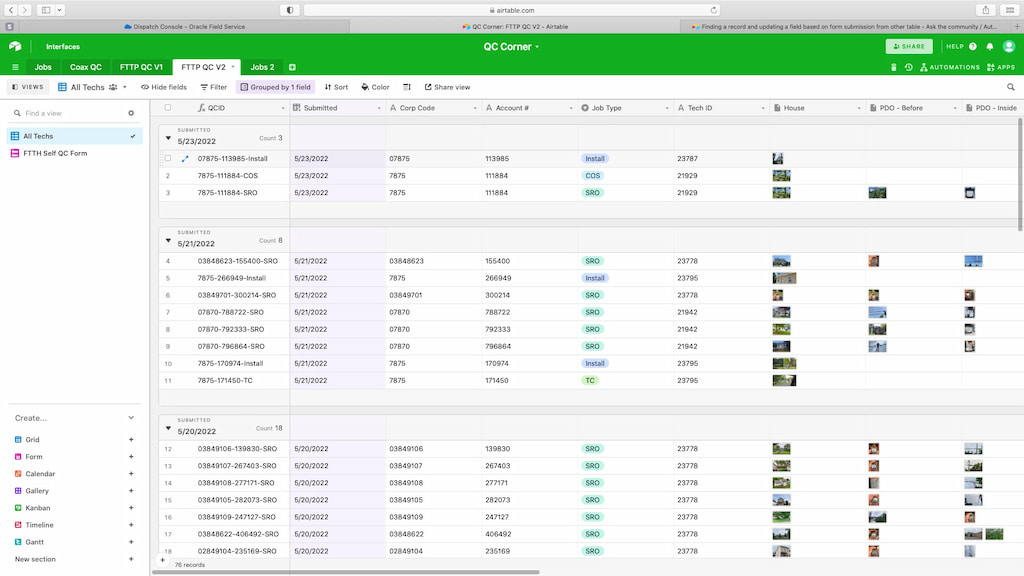
Trello (Free)
The “visual whiteboard” approach—great for tiny teams moving off paper. Add checklists for site steps and use due dates for dispatch timing.
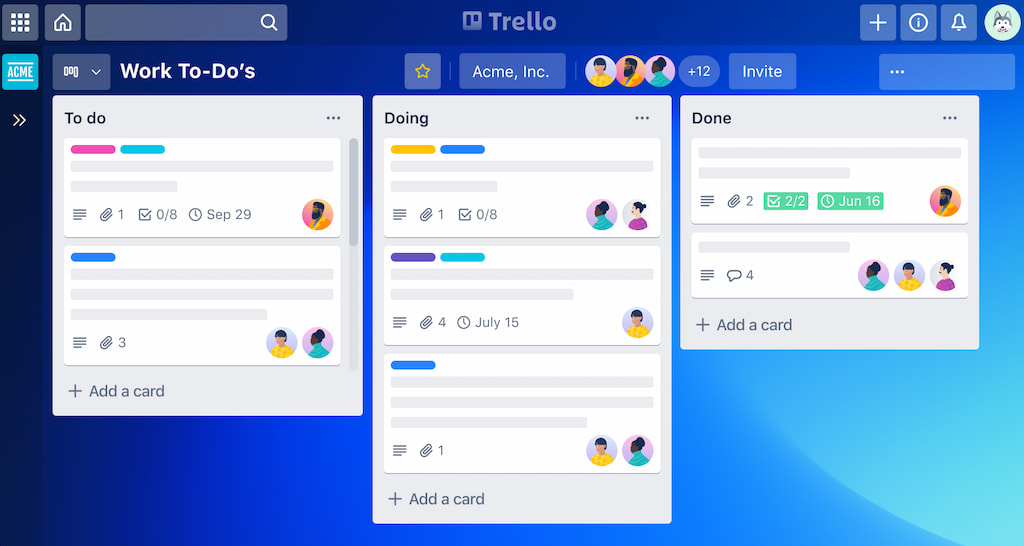
Reality check on “free”: credibility notes
⚖️ Free tiers have limits
Perfect for pilots and small crews, but consider upgrades when you need advanced automations, deep inventory, or customer portals.
🧐 Check real-world experiences
Reddit threads often show owners weighing trade-offs — power vs simplicity, or whether a marketplace like Field Nation is needed for overflow. Firsthand opinions are useful, but always verify fit and pricing with the vendor.
🔵 How Shifts by Everhour Improves Visibility, ROI, and Accountability
- 🕹️ Live scheduling with guardrails
Assign, reassign, and publish shifts in seconds. Set rules for overtime, availability, or role coverage so the calendar stays organized and predictable. - 📊 Scheduled vs actual clarity
See exactly where minutes leak — travel, late starts, callbacks — and adjust routes or staffing next week instead of next quarter. - 💰 Time data that pays for itself
Clean timesheets reduce payroll disputes and make job costing accurate, not guessed. - 📱 Simple mobile flow
Techs open one app to view today’s jobs, clock in, and move on — less tapping, more doing.
💡 Why it matters: When labor is your biggest cost, accuracy is your margin. A single “truth layer” for schedule and time reduces back-and-forth, speeds invoicing, and gives managers a data-backed way to coach the team.
⚡ Where Shifts by Everhour Fits Your Field Workflow
If your crew’s day lives and dies by the schedule, Shifts by Everhour delivers the balance field teams actually need: live scheduling paired with built-in time tracking—all in one streamlined view.
- 🗓️ Plan once, adjust fast — Drag and drop shifts, split jobs, assign backups, and publish updates right from desktop or phone.
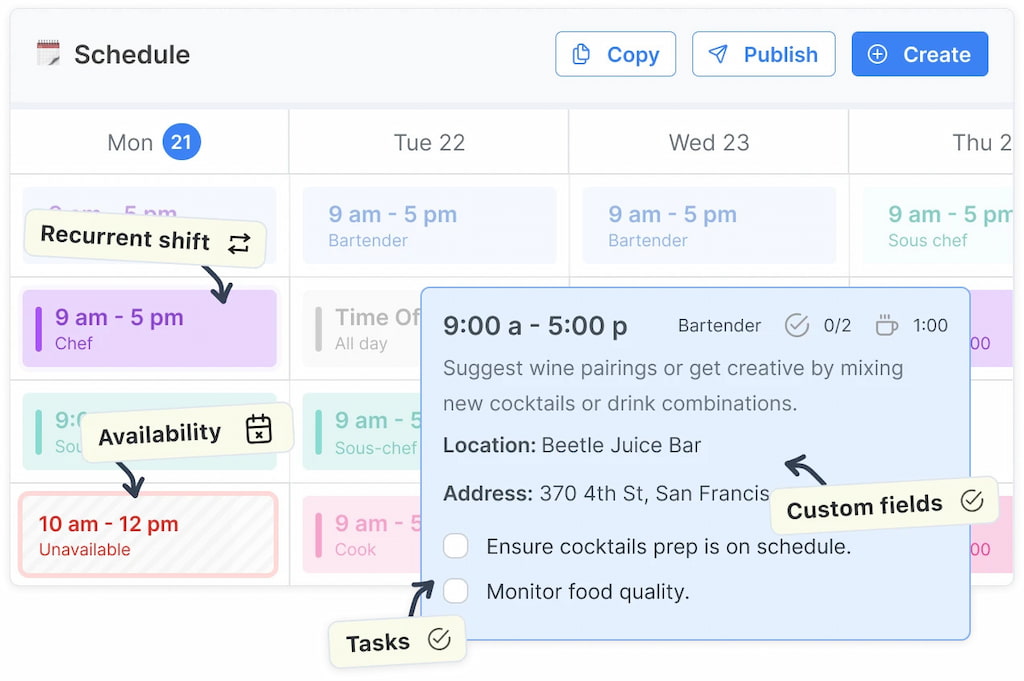
- ⏱️ See “scheduled vs. actual” in real time — Spot overtime risks, late starts, or under-scoped jobs before they spiral.
- 📊 Report without spreadsheet puzzles — Get instant summaries by client, project, or team—ready for payroll or cost checks.
- 👷 Empower the crew — Let techs claim open jobs or request swaps within your rules, cutting dispatcher bottlenecks.
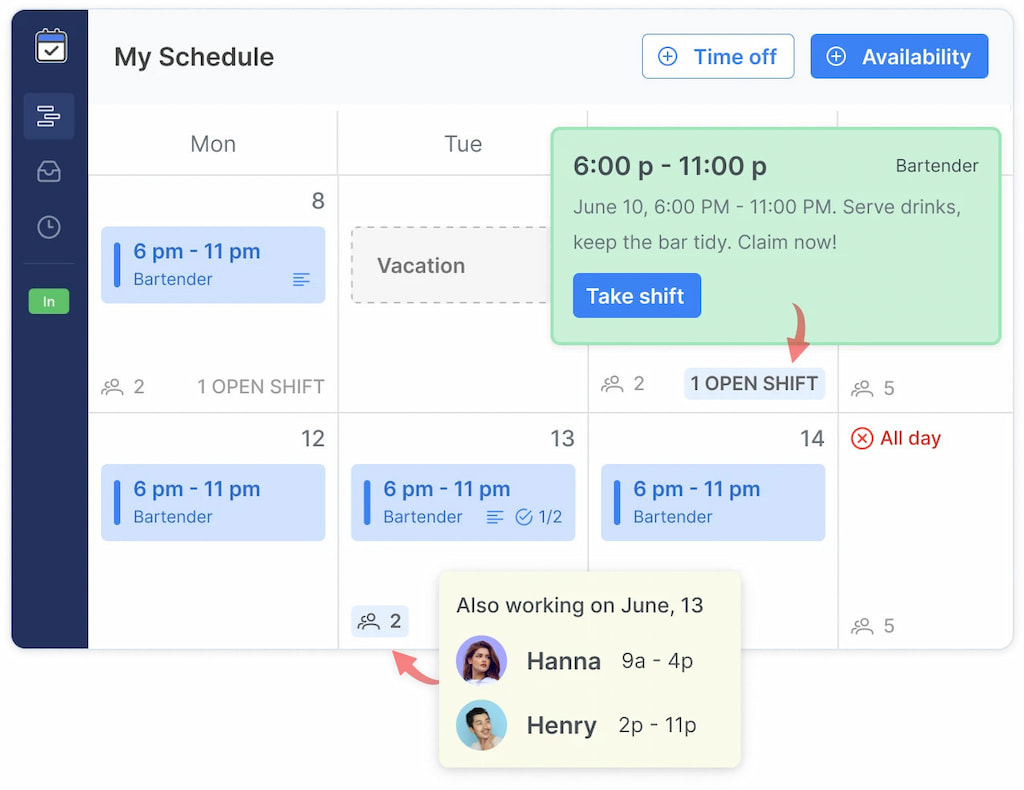
That connected view—who was scheduled, who actually worked, for how long—is often the difference between “we think we made money” and “we know we did.”
🧭 Best Practices: Field-Tested Tips Before You Implement
Keep your rollout practical and people-centered. These field-tested tips help teams adopt new scheduling tools without friction:
- 🚀 Start small — Begin with one crew, one region, or one service line before scaling.
- 📋 Standardize work orders — Use consistent templates for installs, maintenance, and emergencies.
- 📅 Publish early — Release schedules a week ahead and keep open slots for last-minute work.
- ⏱️ Compare plan vs. reality — Track “scheduled vs. actual” for a month to spot travel or routing inefficiencies.
- 🗣️ Listen to the field — Ask techs which steps slow them down and prioritize fixing those.
- 🔔 Automate reminders — Send confirmations and parts readiness alerts to avoid no-shows.
- ⚙️ Pick focus over features — The best app is the one your team actually uses every day.
👀 How to Choose the Right Free FSM Stack (7-Step Checklist)
- 🗂️ Map your core jobs
List your top five job types and the required data (photos, signatures, parts). Make sure your tool handles these cleanly. - ⚙️ Decide “schedule-first” vs. “work-order–first”
If rostering is your daily pain, start with Shifts by Everhour. If work orders or parts are the issue, pair a free CMMS/DIY tool (UpKeep, Fiix, Odoo, Jotform) with simple scheduling. - 📱 Test mobile in the wild
Give the app to a tech for a week. If they dislike it, adoption will stall. - 📊 Confirm “scheduled vs actual” visibility
Essential for payroll, job costing, and coaching — don’t compromise here. - 🔌 Check integrations (now or soon)
Do you need data in QuickBooks, CRM, or Slack? Shortlist tools that connect seamlessly. - 🚦 Start free, set upgrade triggers
Define the metrics that justify paying (e.g., missed SLAs down 20%, first-time fix up 10%). [Insert verified stat from Gartner or Capterra here] - 📝 Document the playbook
Codify templates, photo standards, and checklists so quality doesn’t rely on a single dispatcher.
❓ FAQ: Best Free Field Service Management Software
What’s the best truly free FSM for small teams?
For a combined scheduling/time approach, start with Shifts by Everhour. If you need more “work-order–centric” features, try Odoo Field Service (Community) or pair Jotform forms with a lightweight task tool like ClickUp.
Is Connecteam really free?
Yes—for up to 10 users on its Small Business plan, which is a solid on-ramp for scheduling and crew communication.
Where can I find on-demand technicians if I’m short-staffed?
Use Field Nation’s marketplace: create a free profile to explore talent and jobs; companies can subscribe for advanced capabilities.
Do CMMS tools count as FSM?
For maintenance-heavy operations, yes. Free plans from Fiix and UpKeep can serve as workable FSM-lite stacks when you need work orders, assets, and basic reporting more than advanced dispatching.
What should I watch out for with “free” plans?
Limits on users, submissions, or features (e.g., forms/month, integrations). Use free to pilot, then budget for the features that truly save time and reduce rework.
🔎 Final Thoughts: Best Free Field Service Management Software
The right free field service management software gets you out of the spreadsheet spiral and into a predictable rhythm: clear schedules, consistent work orders, real-time updates, and proof of service. Start lean, standardize your process, and add complexity only when the data tells you it’s worth it.
If managing shifts or tracking time is your daily grind, Everhour keeps it all in one flow. Pair Shifts by Everhour’s scheduling and time tracking with a free work-order layer if you need it—and finally run the field instead of it running you.

